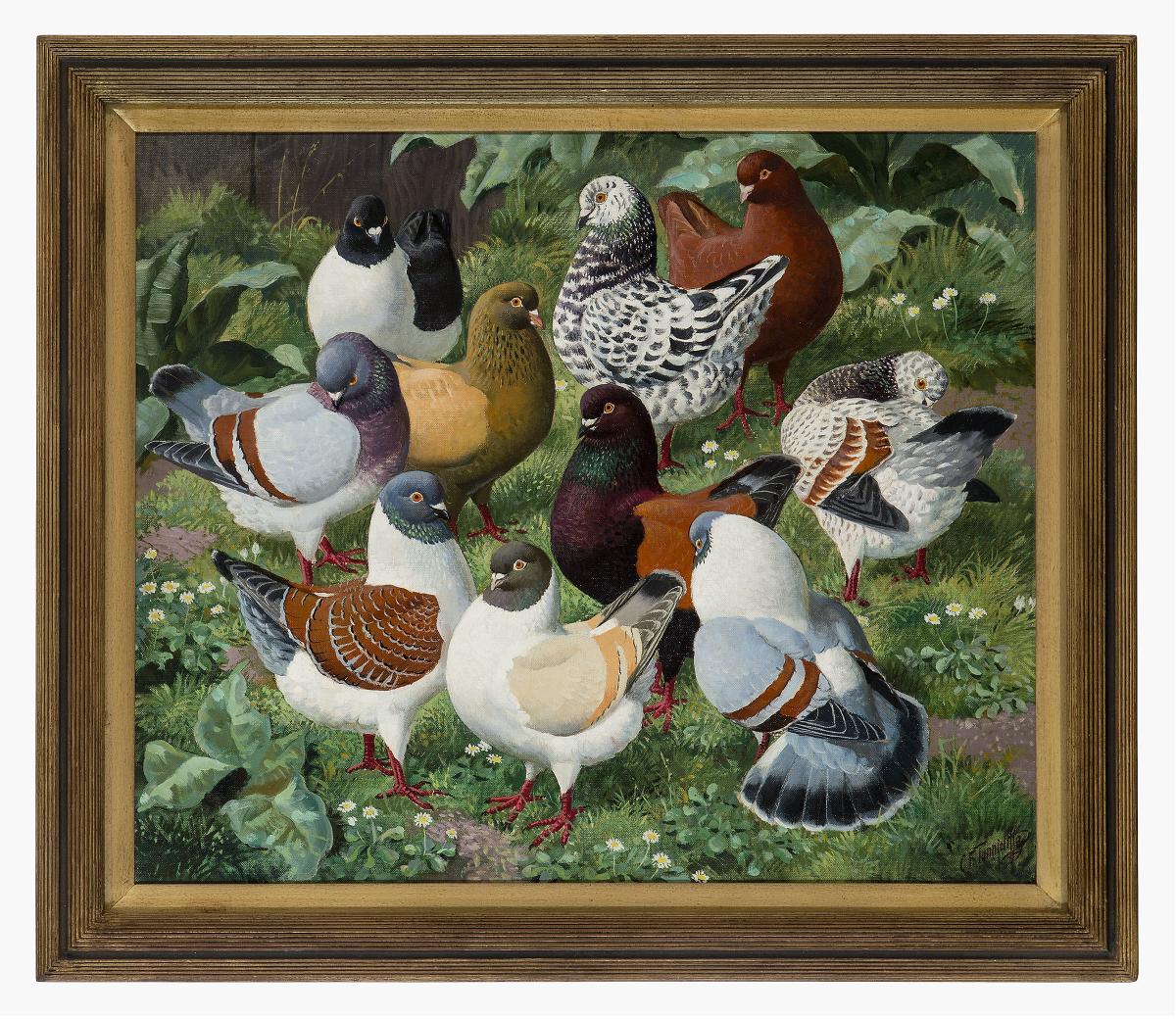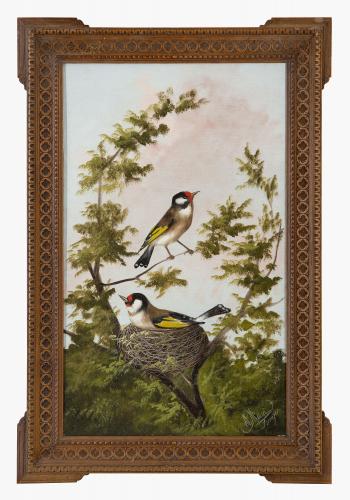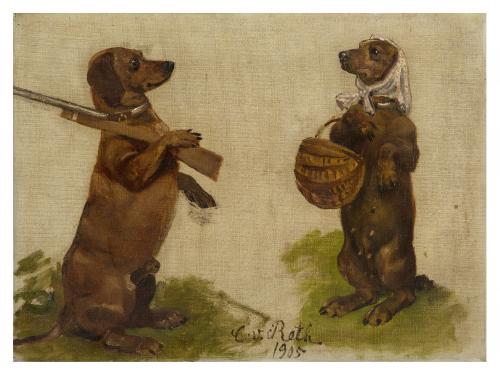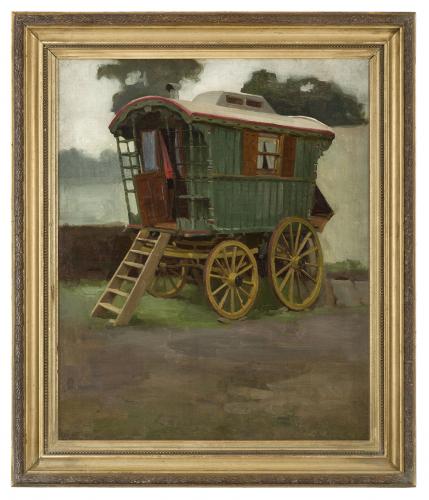

Price on application
This object is eligible for a Certificate of BADA Provenance
The BADA Standard
- Since 1918, BADA has been the leading association for the antiques and fine art trade
- Members are elected for their knowledge, integrity and quality of stock
- Our clients are protected by BADA’s code of conduct
- Our dealers’ membership is reviewed and renewed annually
- Bada.org is a non-profit site: clients deal directly with members and they pay no hidden fees
Charles Frederick Tunnicliffe, R.A. (1901-1979).
The fashion parade.
signed ‘CF Tunnicliffe’ (lower right).
oil on canvas.
25 ⅛ x 30 ¼ in. (63.8 x 76.8 cm.).
frame 30 ⅞ x 36 in. (78.4 x 91.4 cm.).
Painted in circa 1950.
A friend and neighbour of fellow Royal Academician Kyffin Williams (i) (1918-2006), the Royal Academy recently staged a solo exhibition of Charles Frederick Tunnicliffe’s work, showcasing his versatility and exceptional ability as an artist.
Tunnicliffe’s influences are particularly broad and far-reaching, ranging from Oriental art to Henri Matisse, from Joseph Crawhall to Paul Gauguin. Certainly in the present painting, the strength and lines of the composition give the work an almost Oriental feel, while the bold forms and shapes are worthy of any work by Gauguin or Matisse. The execution and brushwork on the foliage, grass and daisies, are perhaps closer to home, and call to mind the work of Sir Stanley Spencer (1891-1959), Royal Academician and contemporary to Tunnicliffe.
Another great influence on Tunnicliffe was the renowned Franco-American ornithological artist adventurer, John James Audubon (1785-1851), whose striking compositions provide an ancestral echo to the present work. Both artists were keen walkers, and shared an indefatigable fascination with nature, which is communicated in their output.
The fashion parade presents the viewer with a kaleidoscopic perfection of balance, a compositional structure that marries aesthetics and subject matter with execution and natural form. The dark central pigeon, dominating the centre of the painting, is balanced by the lighter birds that encircle it - their striking plumage set off by the rich range of greens of the foliage, and punctuated by the pinks of their legs. The scattered leaves and constellations of daisies (not too many, not too few) frame the pigeons, and work together to help create a faultless visual equilibrium, designed, harmonised, and executed by the hand of a master.
Footnotes:
(i) There is a strong connection between Kyffin Williams and C.F. Tunnicliffe indeed. It was Williams that persuaded the highly modest Tunnicliffe to hold an exhibition of his work at the Royal Academy in 1974, which was a great success.
In 1991, Oriel Ynys Môn was built in Angelsey, to house a collection of works by Tunnicliffe, that had been acquired by Anglesey Borough Council from Christie’s, ten years earlier. Williams was a regular visitor to the museum, and donated over 400 works for which a new gallery was constructed within the building. In 2011 (to celebrate it’s 20th birthday) a joint exhibition of works by Tunnicliffe and Williams entitled Island Inspiration was curated, which explored the connection both artists had with Anglesey.
The BADA Standard
- Since 1918, BADA has been the leading association for the antiques and fine art trade
- Members are elected for their knowledge, integrity and quality of stock
- Our clients are protected by BADA’s code of conduct
- Our dealers’ membership is reviewed and renewed annually
- Bada.org is a non-profit site: clients deal directly with members and they pay no hidden fees




